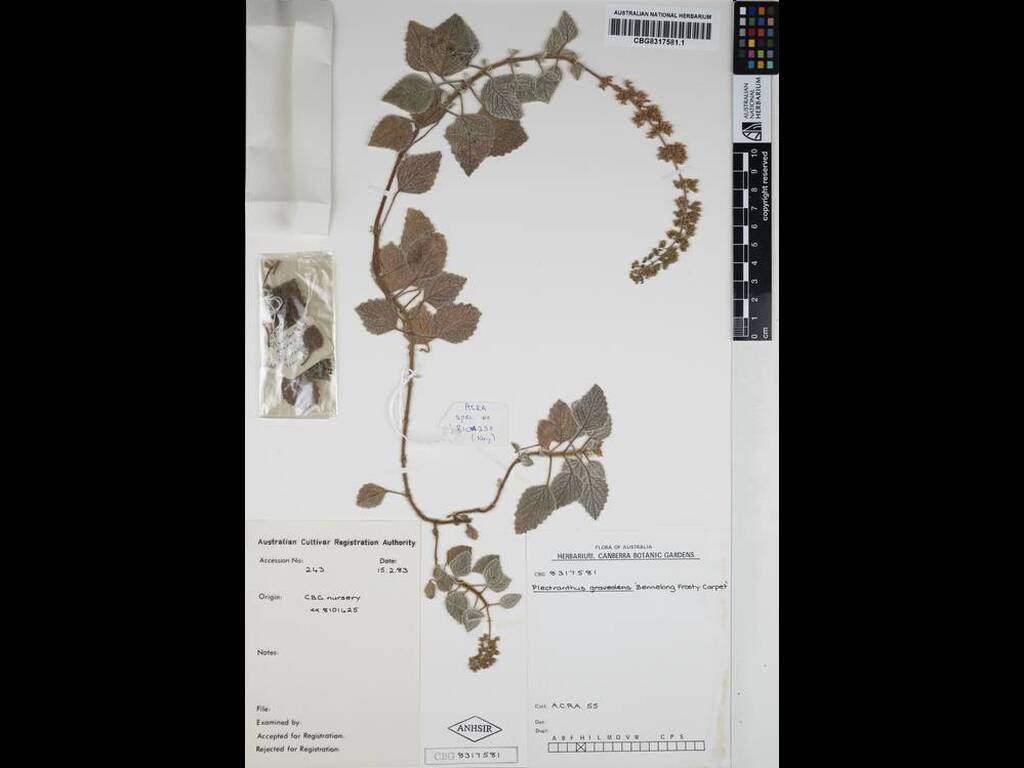Plectranthus graveolens 'Bennelong Frosty Carpet'
- File Number
- 243
- ACRA Field Book Number
- 55
- Registration Date
- 17/10/1984
- Application Received
- 20/03/1981
- Family
- Lamiaceae
- Cultivar Name
- Plectranthus graveolens 'Bennelong Frosty Carpet'
- Origin
- Plectranthus 'Bennelong Frosty Carpet' is a form of Plectranthus graveolens that originated from a wild collection made near Stawell, NSW by Mr Don F Blaxell of the National Herbarium, Royal Botanic Gardens, Sydney. Cultivar first received by the Authority on 20 March 1981. The applicant is the Royal Botanic Gardens, Mrs Macquaries Road, Sydney, NSW 2000.
- Characteristics
- This cultivar is prostrate but with flowering stems 10 to 25cm tall. It roots very freely forming a dense mat plus/minus 2m across. The leaves are suborbicular to broadly ovate plus/minus 8cm long by 4.5cm wide. The concave upper surface of the leaf is deep green and the underside pale green. Both leaf surfaces are covered in a dense coating of fine, twisted, silky hairs that are more prominent on the lower surface. On the dentate leaf margin the whiteness of the hairs contrasts with the leaf colour. The violet blue flowers are borne on a raceme plus/minus 14cm long. Individual corollas are plus/minus 1cm long. In Sydney it flowers from December to February. Diagnosis: P. graveolens 'Bennelong Frosty Carpet' can be distinguished from the normal form of P. graveolens by its prostrate habit, its much smaller leaves and its hairier appearance.
- Cultivation
- The cultivar has performed well in the Royal Botanic Gardens in Sydney and would certainly do well in similar and also milder climatic areas of Australia. After several years in cultivation its habit has remained unchanged. Its drought hardness is not yet fully established.
- Publication
- Wrigley, J.W. & Fagg, M. (1988), Australian Native Plants: propagation, cultivation and use in landscaping Edn. 3: 100
- Colour Coding
- RHS Colour Chart 1966.flowers: violet blue group 91A.
- Propagation
- Cuttings
- Applicant Name
- Royal Botanic Gardens, Sydney
- Uses
- As part of a mass planting or mixed in a shrubbery, or as a feature plant.
- Availability
- Unknown
- ANBG Accession Numbers
- ACC243; ACRA055; CBG8317581.
- NSL ID
- -


